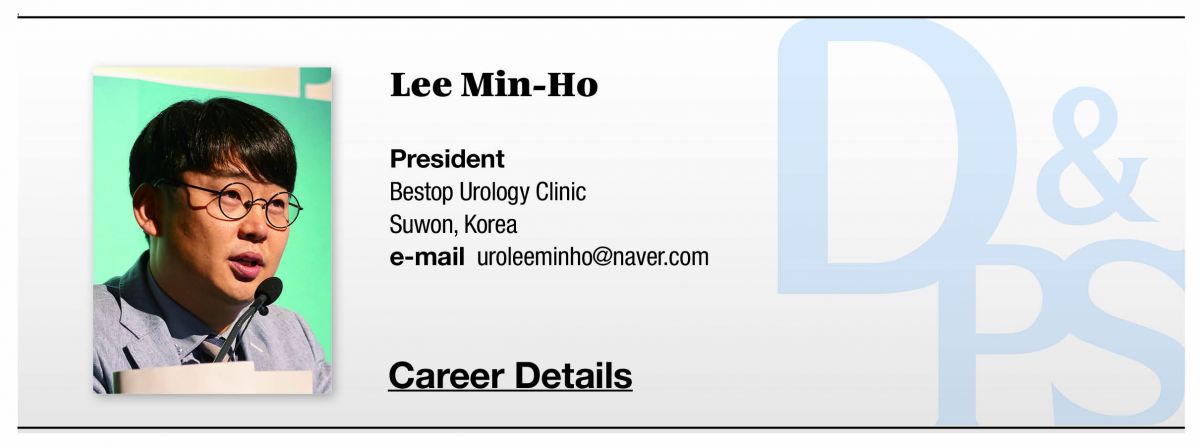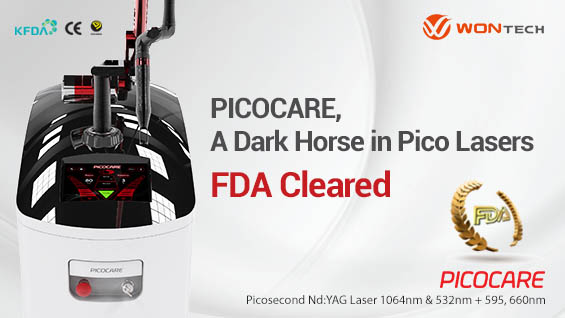
▶ Previous Artlcle: Combination Treatment with Long-pulsed 755‧1064 Laser and Pico 1064‧532 Laser Ⅱ
.jpg)
Figure 1. Lee Min-Ho, President of Bestop Urology Clinic, stressed that he had experienced no hypopigmentation in the course of the use of PICOCARE over the last 3 years.
Picosecond with Low Energy, Causing Less Pain and Side Effects
Finally, this method is a photo mechanical method. In the case of Q-switched Nd:YAG Laser, the selective photo-thermolysis, mentioned by Richard Rox Anderson, is applied. Here comes the concept called ‘TRT’. Simply speaking, if you apply sufficient energy with the pulse duration shorter than that of the TRT of target, the target can be broken while minimizing the thermal damage in the surrounding area.
Then, what is the difference of Picosecond? To understand Picosecond Laser, we need to know the SRT. It is theory that puts more emphasis on shock wave than thermal. TRT is defined as the time when the temperature of the target falls by half after laser irradiation, for example, the time when the temperature of the target falls to 500℃ after it rose 1,000 °C following the laser irradiation.
TRT-based theory maintains that precise photothermolysis can be expected without any heat in the surrounding area when sufficient energy is applied with shorter duration than that.
The SRT-based selective photo-acoustolysis deals with the shock waves occurring when photon is applied to a target. Like the TRT, the time when the shock wave exits the chromophore was defined as ‘SRT’. The theory that the target can be eliminated without physical damage to the surrounding area, if sufficient energy is applied, is the SRT pursued by Picosecond. Picosecond has the advantage that it can eliminate the melanosome mechanically rather than thermally. Specifically, it has the advantage that treatment can be delivered with low energy due to far shorter pulse duration. It also has the advantage that it enables painless treatment because there is no heat involved. In other words, Picosecond Laser enables treatment with photo-mechanical effect. It is the same principle as that of existing Q-switched laser, but it allows the treatment to be provided with less pain and greater safety, using less energy and thermal.
Here, the LIOB(Laser Induced Optical Breakdown) theory can be applied additionally. It is based on the principle of applying the plasma formation to induce ablation in tissues for treatment. The difference from other laser is that plasma is formed when the output density of picosecond laser increases. For plasma formation, the power density of 10 to 11 or higher is required. The output density that triggers plasma varies, depending on the target or wave length, but usually ranges between 10 and 11. At higher power density, plasma is formed and photodisruption reaction begins due to plasma ablation. The tissue formed around the plasma due to shock wave and cavitation is damaged mechanically. Currently, the Picosecond Laser is based on the LITB(Laser Induced Thermal Breakdown), rather than pure LIOB, and forms the plasma by using the thermal.
Fractional tip has been made to facilitate formation of LIOB or LITB, which increases the power density by 10 to 20 times for plasma formation.
[Advertisement] PICOCARE - Manufacturer: WONTECH(www.wtlaser.com)]
-To Be Continued




















